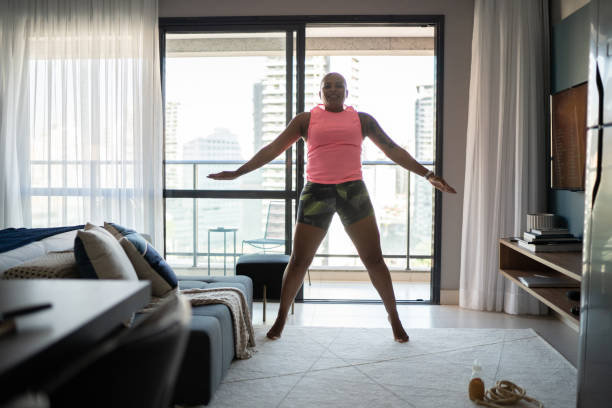Jumping jacks are a classic cardiovascular exercise that have been a staple in fitness routines for decades. They are simple to perform, require no equipment, and can be done just about anywhere. But how many calories does this simple exercise actually burn? In this article, we will explore the calorie-burning potential of jumping jacks and provide some tips for incorporating them into your fitness routine.
First, let’s define what a jumping jack is. A jumping jack is a full-body exercise that involves jumping and spreading your legs out to the sides while simultaneously raising your arms above your head. It is a dynamic, high-impact movement that engages multiple muscle groups and gets your heart rate up.
So, how many calories does 100 jumping jacks burn? The answer depends on the intensity level at which the jumping jacks are performed and the individual’s weight.
According to the Centers for Disease Control and Prevention (CDC), a person weighing 125 pounds (57 kg) will burn about 70 calories by performing 100 jumping jacks at a moderate intensity level. Someone weighing 155 pounds (70 kg) will burn about 88 calories, while a person weighing 185 pounds (84 kg) will burn about 105 calories.
It’s important to note that these estimates are based on the assumption that the jumping jacks are performed at a moderate intensity level for a duration of 10 minutes. If the intensity level is increased or the duration is extended, the number of calories burned will also increase.
For example, a person weighing 155 pounds (70 kg) who performs 100 jumping jacks at a vigorous intensity level for 20 minutes will burn approximately 176 calories. This is almost double the number of calories burned at a moderate intensity level for half the time.
It’s also worth noting that jumping jacks can be modified to increase or decrease the intensity level. For example, adding a plyometric jump to each rep or performing the exercise with weights can increase the intensity. On the other hand, performing the exercise at a slower pace or with a smaller range of motion can decrease the intensity.
In addition to burning calories, jumping jacks have several other benefits. They can improve cardiovascular endurance, increase flexibility and mobility, and strengthen the muscles in the legs, arms, and core.
Incorporating jumping jacks into a regular fitness routine can help a person reach their weight loss or maintenance goals. However, it’s important to remember that calorie expenditure from physical activity is just one part of the equation when it comes to weight management. A healthy diet and adequate sleep are also important factors to consider.
But how is calorie burn during exercise calculated? The most accurate way to measure calorie burn during exercise is to use a device called a metabolic cart, which measures the amount of oxygen you consume and the amount of carbon dioxide you produce during exercise. This information is used to calculate your metabolic rate, which is the number of calories your body burns at rest. Your metabolic rate is influenced by factors such as your weight, age, gender, and muscle mass.
There are also several equations and formulas that can be used to estimate calorie burn during exercise, such as the metabolic equivalent of task (MET) and the Compendium of Physical Activities. These equations take into account the intensity level of the exercise and the duration of the activity. For example, the MET for jumping jacks is 8.0, which means that the energy cost of doing jumping jacks is eight times your resting metabolic rate.
In conclusion, 100 jumping jacks can burn anywhere from 50 to 100 calories, depending on your weight, intensity level, and other factors. While this may not seem like a lot, keep in mind that every little bit of physical activity adds up and can contribute to weight loss or weight management when combined with a healthy diet and overall active lifestyle. So next time you’re looking for a quick and easy way to get your heart rate up, consider adding some jumping jacks to your workout routine.

 Home
Home Health
Health Diet & Nutrition
Diet & Nutrition Living Well
Living Well More
More












